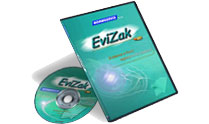Potrebujeme váš súhlas na využitie jednotlivých dát, aby sa vám okrem iného mohli ukazovať informácie týkajúce sa vašich záujmov. Súhlas udelíte kliknutím na tlačidlo „OK“.
ASTM D2719-13
Standard Test Methods for Structural Panels in Shear Through-the-Thickness
Automaticky preložený názov:
Štandardné skúšobné metódy pre štrukturálne panely v šmyku Prostredníctvom-the-Hrúbka
NORMA vydaná dňa 1.10.2013
Informácie o norme:
Označenie normy: ASTM D2719-13
Poznámka: NEPLATNÁ
Dátum vydania normy: 1.10.2013
Kód tovaru: NS-21295
Počet strán: 10
Približná hmotnosť: 30 g (0.07 libier)
Krajina: Americká technická norma
Kategória: Technické normy ASTM
Kategórie - podobné normy:
Anotácia textu normy ASTM D2719-13 :
Keywords:
shear, shear test, shear through-the-thickness, structural panels, ICS Number Code 79.060.10 (Plywood)
Doplňujúce informácie
| Significance and Use | ||||||||
|
3.1 The strength and modulus of rigidity of structural panels in shear through-the-thickness obtained by these test methods are required for the rigorous design of many lumber-panel structural components such as trusses with panel gussets, box beams, folded plate roofs, and space plane structures, as well as floor and roof diaphragms, and shear walls. These properties are of secondary importance in typical roof deck and sheathing applications, and in crates and shipping containers. 3.2 Veneer produced by slicing or rotary peeling may contain fine checks or separations parallel to the grain on the knife side of the veneer that are produced as the knife is forced through the wood. These checks are termed “knife checks” to distinguish them from occasional checks that may be formed on the opposite side of the veneer by forces at the compression bar, and from checks caused by drying. Average depth of knife checks has been found to strongly influence shear properties in plywood panels and may be of significance in veneer incorporated in composite panels. Measurement of depth of knife checks is recommended in these test methods. 3.3 To control or define other variables influencing shear properties, these test methods require determination of moisture content and elapsed time to failure. The conditioning of test material in controlled atmosphere and determination of specific gravity are recommended. |
||||||||
| 1. Scope | ||||||||
|
1.1 These test methods determine the shear through-the-thickness properties of structural panels associated with shear distortion of the major axis. Structural panels in use include plywood, oriented strand board, and composites of veneer and of wood based layers. Three test methods are included which differ somewhat in their application:
The choice of test method will be determined in part by the purpose of the tests, characteristics of test material, and equipment availability. In general, Test Method B or C for large specimens is preferred when equipment, amount of test material, and experimental plan permit. 1.1.1 Test Method A: Small Panel Shear Test—This test method is suitable for testing small samples of uniform material including investigations of the effects of grain direction or orientation and of many raw materials and manufacturing process variables which influence shear properties uniformly throughout the specimen. The test method is unsuited for determining effects of grade and manufacturing features such as density variations, knots, and core gaps within the specimen. 1.1.2 Test Method B: Large Panel Shear Test—This test method is regarded as giving the most accurate modulus of rigidity and is therefore recommended for elastic tests of materials to be used in stress analysis studies of test structures. This test method also yields excellent shear strength values for clear material. However, in spite of the large size of the specimen, failures generally occur only in narrow zones at the perimeter of the test area. This characteristic, a result of the heavy perimeter framing, causes this test method to be generally unsuited for determining grade and manufacturing effects such as density variations, core gaps, and knots that are not uniformly distributed throughout the panel. Generally, only in cases where effects of these factors under conditions of heavy perimeter framing are desired, should the test method be applied. 1.1.3 Test Method C: Two-Rail Shear Test—This test method is applicable to a wide variety of materials and problems. The specimen fabrication and test procedures are somewhat simpler than in Test Methods A and B. The specimen is free to shear parallel to its 24-in.(610-mm) length dimension anywhere within the 8-in. (203-mm) width between rails. Thus, the test method is well suited for determining grade and manufacturing effects such as core gaps and knots occupying and affecting small areas. The test method is not so ideally suited for determination of modulus of rigidity, but when adjusted for strain distribution effects, values approximating those obtained by Test Method B result. The test method simulates effects of heavy framing when expected planes of weakness are oriented perpendicular to rails and no framing at all when parallel to rails. 1.2 Significant differences,
moderate to small in magnitude, among the three test methods have
been found to exist when these test methods are applied to plywood
of clear straight-grained veneers. Therefore, when comparisons are
made among test results, it is recommended that the same test
method be used throughout.
1.3 This standard does not purport to address all of the safety concerns, if any, associated with its use. It is the responsibility of the user of this standard to establish appropriate safety and health practices and determine the applicability of regulatory limitations prior to use. |
||||||||
| 2. Referenced Documents | ||||||||
|
Podobné normy:
Historická
1.11.2011
Historická
1.6.2012
Historická
1.11.2011
Historická
1.11.2011
Historická
1.5.2011
Historická
1.5.2009
Odporúčame:
EviZak - všetky zákony vrátane ich evidencie na jednom mieste
Poskytovanie aktuálnych informácií o legislatívnych predpisoch vyhlásených v Zbierke zákonov od roku 1945.
Aktualizácia 2x v mesiaci !
Chcete vedieť viac informácii ? Pozrite sa na túto stránku.



 ASTM D1038-11
ASTM D1038-11 ASTM D2559-12a
ASTM D2559-12a ASTM D2718-00(2011)..
ASTM D2718-00(2011).. ASTM D3044-94(2011)..
ASTM D3044-94(2011).. ASTM D3499-11
ASTM D3499-11 ASTM D3500-90(2009)..
ASTM D3500-90(2009)..
 Cookies
Cookies
